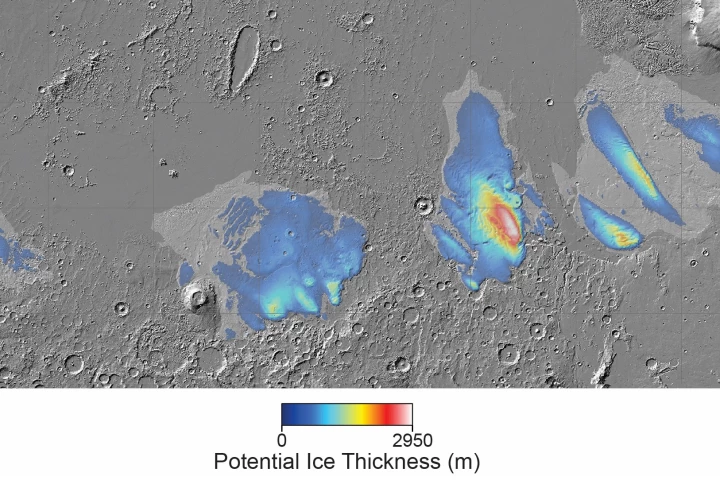Mars Express
-
A massive volcano has been hiding in plain sight on Mars, says new research. Not only is its sheer size noteworthy, but the team believes it might also harbor glacial ice that could be critical for further exploration and Martian settlements.
-
Data from ESA's Mars Express indicates that there may be subterranean ice deposits at the Martian equator that are up to 2.3 miles (3.7 km) thick. With enough water to fill the Red Sea, this could be a tremendous resource for future Mars colonies.
-
Recent studies reported the discovery of lakes of liquid water below the polar ice caps on Mars, but others later refuted the find. Fueling the debate are two new independent studies, which have reached opposite conclusions.
-
By conducting "flybys" of Phobos when it wasn't actually there, ESA's Mars Express orbiter provided researchers with a controlled experiment to learn more about the mysterious, intermittent interaction between the Martian moon and solar winds.
-
In 2018 astronomers announced the discovery of lakes of liquid water on Mars at the south pole. Sadly, a trio of new papers refutes the claim, with new experiments suggesting that the “water” signal was more likely produced by frozen clay instead.
-
By studying the logs of computer malfunctions caused by high-energy particles striking their circuitry, ESA scientists have used "housekeeping" data from the Rosetta and Mars Express deep-space probes to shed new light on cosmic rays in the solar system.
-
ESA's Mars Express has found evidence of more liquid water beneath the ice cap in the south polar region of Mars. Based on data from the MARSIS radar instrument, researchers found three subsurface ponds with the largest measuring 20 x 30 km (12 x 19 mi).
-
The coronavirus situation in Europe has forced ESA to temporarily suspend a number of its deep-space missions. To reduce risk to personnel, ESOC is reducing on-site crews and shutting down instruments on eight spacecraft.
-
ESA's Mars Express spacecraft has captured a rare movie of the Martian moon Phobos. The moon is set to be the target of an international mission to survey the Red Planet’s two natural satellites, and return a surface sample to Earth.
-
ESA has released a breathtaking mosaic of the Red Planet, stitched together from images taken by the Mars Express spacecraft.
-
The ExoMars Trace Gas Orbiter (TGO) has made a map of the distribution of watery minerals in the Martian surface, studied how the global dust storm affected the atmosphere, and intriguingly found very little methane, which calls into question the results of a study just last week.
-
The mystery of methane on Mars has been wafting around for decades. Now, using data gathered by the ESA's Mars Express orbiter and NASA's Curiosity rover on the ground, a new study has not only confirmed that the gas is there, but identified its likely source.
Load More










